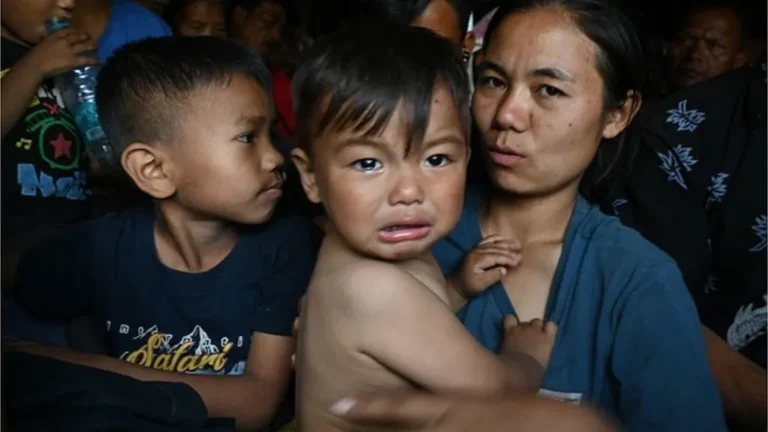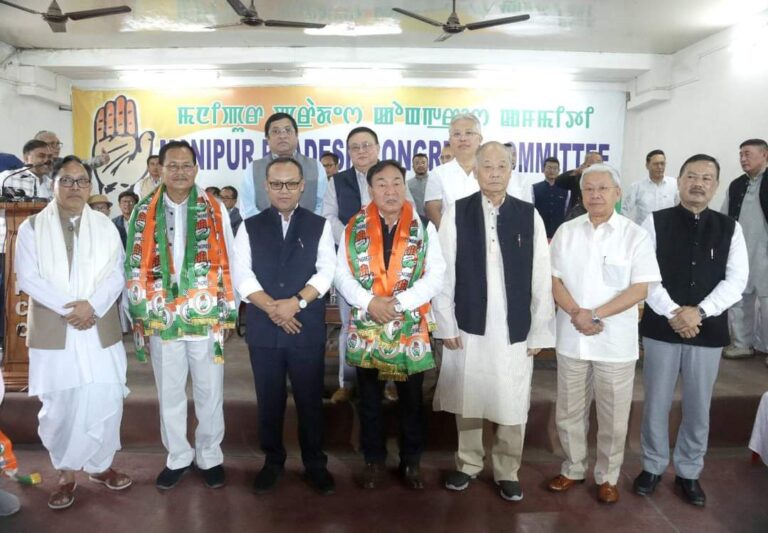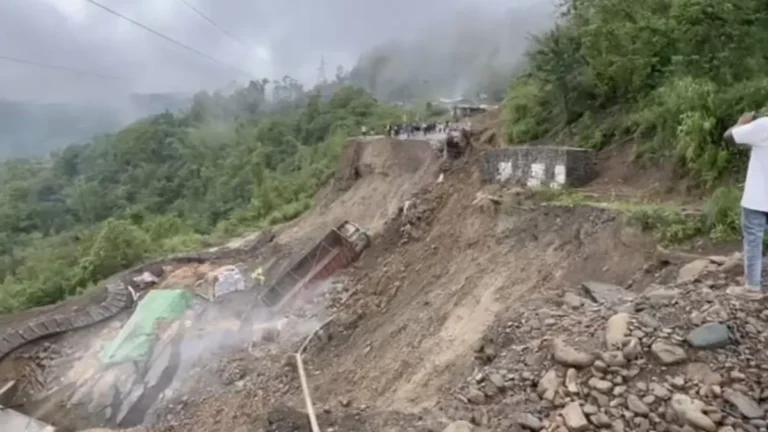Manipur’s Poultry Farmers Struggle Amid Feed Shortage
Short Summary: In Manipur, poultry farmers are facing severe hardships due to a feed shortage triggered by an ongoing economic blockade. Since October 2024, trucks carrying chicken feed have been stranded, leaving farmers unable to sustain their stock. Some farmers have resorted to feeding their chickens rice and ORS, but it’s an impractical solution. Reports show that chickens are dying, falling sick, and even resorting to cannibalism due to hunger. Farmers and associations are urging authorities to resolve the situation before it worsens.
The Ongoing Crisis in Manipur’s Poultry Industry
Manipur, a state nestled in the northeastern region of India, has been grappling with a significant crisis in its poultry farming sector. The ongoing economic blockade along the National Highway 37, which began in October 2024, has left trucks carrying essential chicken feed stranded for weeks. This blockade has escalated into a full-blown crisis for the state’s poultry farmers, who are struggling to keep their birds alive and their businesses afloat.
What’s Causing the Poultry Feed Shortage?
At the heart of the problem lies the disruption of transportation. The blockade, initiated by various Naga groups, has blocked vital supply routes for essential goods, including poultry feed. As a result, chicken farmers in Manipur have been unable to procure feed, causing a domino effect on their operations. Without proper feed, chickens are facing severe malnutrition, resulting in sickness, deaths, and unusual behavior like cannibalism.
Chicken farmers, some of whom have been in the business for decades, are now seeing their stock dwindle rapidly. In addition to this, the prices of chicken feed have shot up significantly, making it even more difficult for farmers to sustain their operations. The price of chicken feed has increased from Rs 2,300 per bag to Rs 3,500, further straining the already vulnerable poultry business in the region.
The Devastating Impact on Farmers
The struggle is personal for many poultry farmers in the region. James Gangmei, a 61-year-old farmer who has been in the business for nearly two decades, says that he has never faced such a crisis. Gangmei’s chickens, which had been thriving, have now started to suffer from malnutrition. The absence of chicken feed has led to improper ovulation in hens, and in some cases, chickens have started to cannibalize each other. The dire situation has left farmers like Gangmei with no choice but to substitute the feed with rice, ORS, and other makeshift alternatives, which is not sufficient to sustain the birds.
For young farmers like Thoudam Priyobarta, who inherited a chicken farm from his parents, the situation is equally grim. Priyobarta reports that anywhere between 50-100 chickens fall sick or die every day. This stark reality has led him to substitute chicken feed with vegetables and other makeshift ingredients. But these substitutes do not provide the nutritional value chickens need to thrive.
The Role of the Manipur Poultry Development Association (MPDA)
The Manipur Poultry Development Association (MPDA) has been actively involved in addressing the issues faced by farmers. According to the general secretary of MPDA, Chongthan Dhrubatara, the shortage of feed is seriously impeding the growth of poultry farming in the state. Farmers are losing their livelihoods, and the poultry industry, which is an essential part of the local economy, is under threat.
Dhrubatara also pointed out that the lack of adequate stockpiles due to the blockade has compounded the problem. He called on the authorities to take immediate action to lift the blockade and ensure that essential goods, including poultry feed, can reach the farmers in time.
The Broader Economic Implications
The poultry sector in Manipur plays a crucial role in the state’s economy. It provides income for thousands of families and contributes to the local food supply. However, the economic blockade is not just affecting the poultry industry but is also part of a larger political and social conflict in the region. As the blockade continues, the ripple effects are being felt across various industries, but none perhaps as severely as the poultry sector.
The repercussions of the feed shortage go beyond just the economic loss. It has led to increased unemployment, as many individuals who work in the poultry farming industry are now facing uncertain futures. Additionally, the shortage of chicken has caused a spike in meat prices, further hurting the local population, especially those who rely on affordable protein sources.
The Need for Immediate Intervention
The poultry farmers of Manipur are in dire need of intervention from the state and central governments. They are calling for an end to the blockade and a swift resolution to the feed shortage. Authorities must step in to ensure that essential goods can reach the affected regions without delay.
The state government must also consider supporting poultry farmers by offering subsidies or financial aid to mitigate the impact of the crisis. Without such support, the survival of the poultry farming community in Manipur is at serious risk. This situation highlights a critical gap in the state’s ability to manage supply chains in times of crisis, and it underscores the importance of ensuring that essential industries are protected from disruptions like these.
What’s Next for Manipur’s Poultry Industry?
As the situation continues to worsen, many fear that the damage to Manipur’s poultry industry will be irreversible. The state’s farmers are working tirelessly to survive, but without proper feed and support, their future looks uncertain. If the economic blockade continues, the poultry sector may collapse, resulting in job losses, higher prices, and an overall negative impact on the economy.
In Conclusion: A Call to Action
It is clear that Manipur’s poultry farmers are facing a crisis of unprecedented proportions. The ongoing blockade has disrupted the supply of chicken feed, and the rising costs of feed are exacerbating the situation. For the farmers, this is not just about lost income; it’s about survival. The authorities must take immediate action to resolve the feed shortage and lift the blockade to ensure that the poultry industry in Manipur can recover and thrive once again.
FAQs
- Why is there a poultry feed shortage in Manipur? The shortage is caused by an ongoing economic blockade that has disrupted the supply of feed from outside the state.
- How is the feed shortage affecting poultry farmers? Farmers are seeing their chickens die or become sick, and some chickens are even resorting to cannibalism due to hunger.
- What alternatives are farmers using for chicken feed? Farmers are using rice, ORS, and vegetables as makeshift feed, but these are not nutritionally sufficient for the chickens.
- How much has the price of chicken feed increased in Manipur? The price of chicken feed has risen from Rs 2,300 per bag to Rs 3,500.
- What can be done to help Manipur’s poultry farmers? Immediate action from the authorities to lift the blockade and provide subsidies or support for the farmers is necessary to help them survive.



